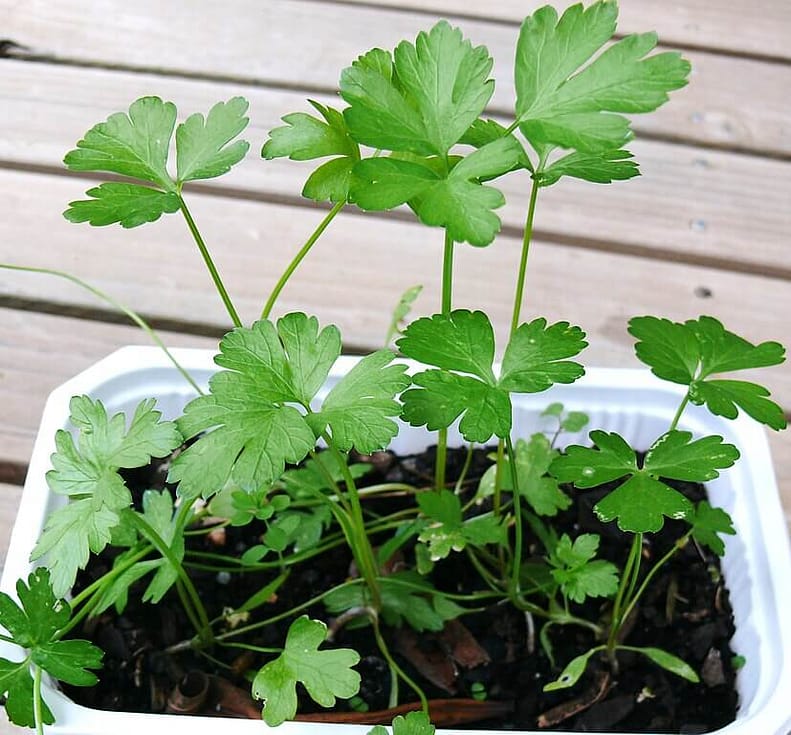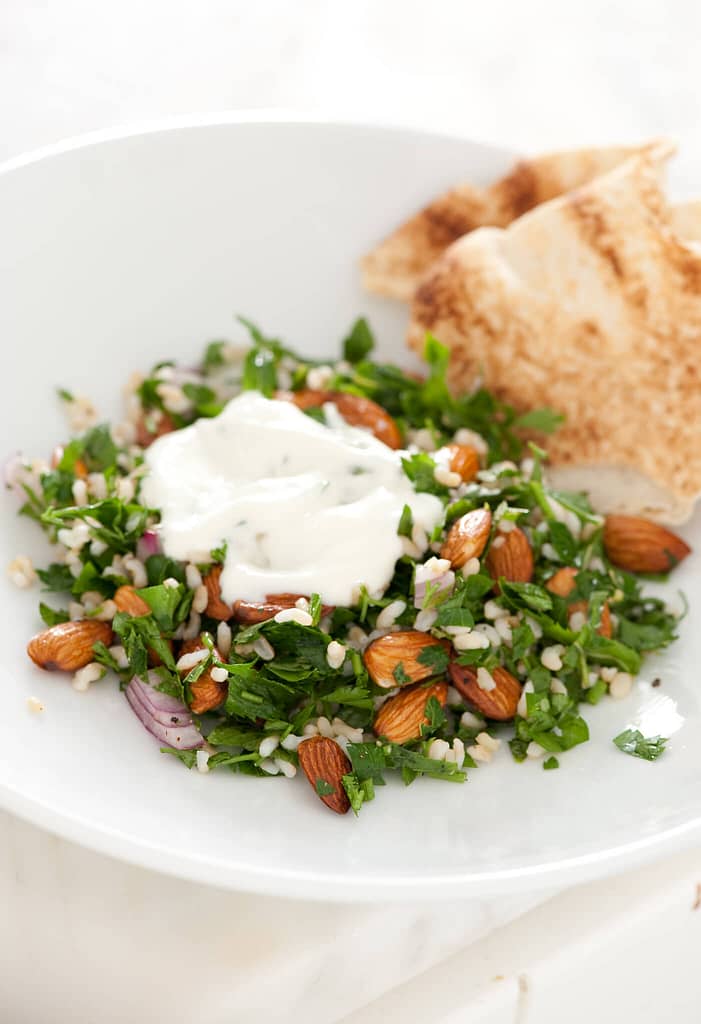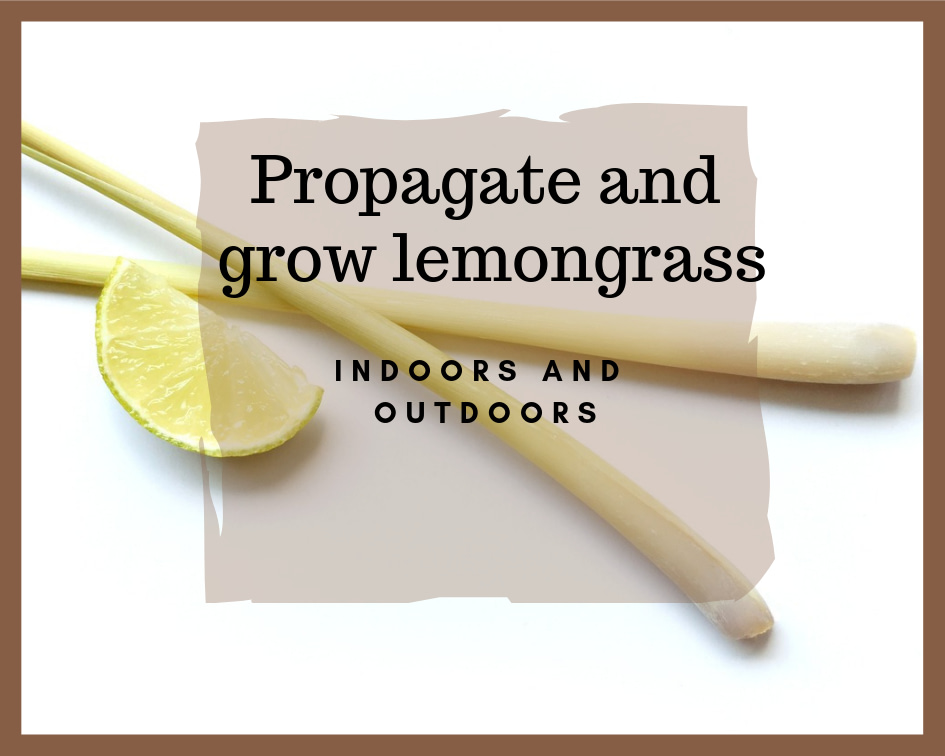This post may contain affiliate links. As an Amazon Associate we earn from qualifying purchases.
You don’t need a huge plot of land to grow herbs. In fact, you can grow parsley indoors.
Parsley (Petroselinium crispum) is more than just a pretty face on a dinner plate. The celery and carrot relative is rich in potassium and Vitamin A and, in moderation, it’s a good source of dietary fiber.
Parsley, a biennial plant, spends its first year growing a few leaves but concentrates mostly on building a tap root in which to store energy over the winter.
The following spring, the plant produces stems, leaves, and flowers. Best of all, parsley provides an attractive and aromatic element to your indoor herb garden.
Planting Parsley Seeds
While waiting for parsley seeds to germinate isn’t quite as boring as watching paint dry, you will need patience as they are slow to break the soil. If you soak the seeds in warm water the day before planting you may speed up the process of growing parsley indoors.
Here are the supplies you’ll need to grow parsley from seeds:
- Parsley seeds
- Cell propagation trays
- Sterile potting mix
- Plastic wrap or dome
- Fish fertilizer
Pour the germination mix into an empty planting pot and run water over it, stirring, until the mix is thoroughly saturated. Set it aside to drain until it has the moisture content of a well-wrung sponge.
Fill each cell in the propagation tray with the moist potting mix.
Place two or three seeds on the surface of each cell and then sprinkle a very thin (about 1/8-inch) layer of soil over them. Press lightly to ensure good seed-to-soil contact.
You’ll need to cover the seeds during germination to maintain a good humidity level and provide warmth for the seeds.
This can be accomplished with plastic wrap or a humidity dome. Keep the seeds covered until you see signs of germination, then remove the cover.
Keep the soil slightly moist while the seedlings begin to develop. When the parsley seedlings have their third set of true leaves, it’s time to pick and choose which ones will grow on. Yes, it is hard, but remove all but the largest, most robust seedlings.
Give your indoor parsley plants light
Parsley plants require lots of light to grow strong so place the pots near a window with a southern or western exposure.
Six to eight hours of sunlight each day is ideal but if you can’t provide that, use fluorescent lights, placed 6 inches above the tops of the plants, and leave them on for 12 hours every day.
Parsley plant water and fertilizer needs
It’s important to keep an eye on the moisture content of the soil as the seedlings grow. Water them only when the soil feels dry to the touch.
About three weeks after the seeds sprout, apply a liquid fish emulsion at one fourth the strength listed on the label.
Use the same solution to water the plants every four to six weeks.
 Transplanting parsley seedlings
Transplanting parsley seedlings
When your parsley seedlings reach 3 to 5 inches in height, it’s time to transplant them into larger containers. Choose a 5-gallon pot in which to transplant the parsley seedlings and fill it with a quality potting soil.
This pot will be the permanent home for the parsley so choose one that you can live with.
Tip: If you’ll be using terra cotta or clay pots, soak them in water before filling them with soil. This helps prevent the clay from leaching moisture from the soil.
Use a pencil to create a planting hole that is the depth at which the seedlings are currently growing. Carefully remove the parsley seedlings from their current pots and touch the roots as little as possible.
Slide the roots into the hole in the soil in the new pot, fill the hole with soil and pat very gently to ensure that the roots have contact with the soil.
Place the pot back into the spot near the southern or eastern exposure window.
Tip: Harvest the parsley from stems that have three leaf segments.

What to do with all that fresh parsley
- If you want to store your parsley haul for later use, Molly Watson at thespruceeats.com suggests double-bagging it. No need to remove the leaves first, just throw the entire stems into the bag. Squish out as much of the air in the bag as possible and then freeze it.
- You can also chop it and refrigerate it. Karen Tedesco at familystylefood.com shows you how, step-by-step.
- Dry it and store it in air-tight jars. No dehydrator? Dry the parsley in the oven, by hanging it and allowing it to air dry or even by laying it in the sun.
- Cook up some Tabbouleh. It’s healthy and loaded with parsley. In fact, this Tabbouleh recipe, which sounds amazing, used “2 bunches” of parsley.
- I’ll be Captain Obvious for a minute and recommend making a huge batch of pesto.
- Use it in the butter you need to make a to-die-for garlic bread.
- Food52.com com offers up another use for all that parsley, Sheet-Pan Chicken With Potatoes, Olives & Herbs.
Warning: “… consuming very large amounts of parsley is LIKELY UNSAFE, and can cause other side effects like anemia and liver or kidney problems,” according to the editors at webmd.com.
Mention of a fertilizer or pesticide, or use of a pesticide or fertilizer label, is for educational purposes only. Always follow the product’s label directions attached to the container you are using. Be sure that the plant you wish to treat is listed on the label of the pesticide you intend to use. And observe the number of days between pesticide application and when you can harvest your crop.




